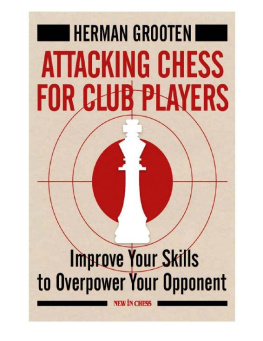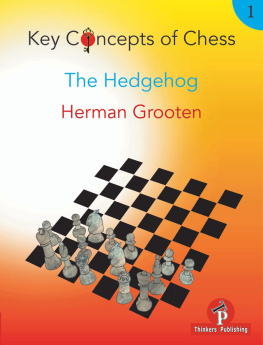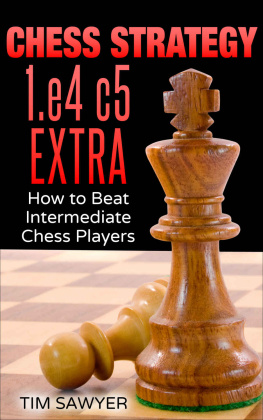Herman Grooten - Understanding Before Moving 3 - Part 2: Sicilian Structures - Taimanov - Kan - Richter Rauzer (Understanding before Moving, 4)
Here you can read online Herman Grooten - Understanding Before Moving 3 - Part 2: Sicilian Structures - Taimanov - Kan - Richter Rauzer (Understanding before Moving, 4) full text of the book (entire story) in english for free. Download pdf and epub, get meaning, cover and reviews about this ebook. year: 2021, publisher: Thinkers Publishing, genre: Home and family. Description of the work, (preface) as well as reviews are available. Best literature library LitArk.com created for fans of good reading and offers a wide selection of genres:
Romance novel
Science fiction
Adventure
Detective
Science
History
Home and family
Prose
Art
Politics
Computer
Non-fiction
Religion
Business
Children
Humor
Choose a favorite category and find really read worthwhile books. Enjoy immersion in the world of imagination, feel the emotions of the characters or learn something new for yourself, make an fascinating discovery.
- Book:Understanding Before Moving 3 - Part 2: Sicilian Structures - Taimanov - Kan - Richter Rauzer (Understanding before Moving, 4)
- Author:
- Publisher:Thinkers Publishing
- Genre:
- Year:2021
- Rating:5 / 5
- Favourites:Add to favourites
- Your mark:
Understanding Before Moving 3 - Part 2: Sicilian Structures - Taimanov - Kan - Richter Rauzer (Understanding before Moving, 4): summary, description and annotation
We offer to read an annotation, description, summary or preface (depends on what the author of the book "Understanding Before Moving 3 - Part 2: Sicilian Structures - Taimanov - Kan - Richter Rauzer (Understanding before Moving, 4)" wrote himself). If you haven't found the necessary information about the book — write in the comments, we will try to find it.
Before you lies the second volume in a trilogy about the Sicilian Defense. The first volume dealt with the Najdorf and Scheveningen variations, and it is now time to pay attention to three other extremely popular systems: the Taimanov, Kan and Richter-Rauzer variations. After careful consideration within the Thinkers Publis-hing team, we decided that it made sense to group these variations together. In particular, the first two are closely related and share the feature that, in both cases, Black plays e7-e6 and a7-a6 at an early stage. They typically have the idea of retaining more options for their kings bishop by postponing d7-d6 (or even omitting it entirely.) The bishop may go to b4 or c5 in different lines. The Richter-Rauzer is, in theory, just one of the possible developments from a Classical Sicilian. We have already dealt with a few games that started with the Classical and where Black shortly played e7-e6; and 6.Bc4 (the Sozin variation) was rightly treated within the Scheveningen pages. However, it is clear that Whites most popular counter, the Richter-Rauzer variation (6.Bg5) deserves separate attention. While looking at the variation structure for the Kan and Taimanov and deciding on which model games to use, I noticed a lot of possible transitions to the Hedgehog structure, shown on the right. The key features are white pawns on e4 and c4, and at least four black pawns on a6, b6, d6 and e6. This structure is ideally suited to the task of playing for a win as Black, because of the very complicated middlegames that arise. (And one often needs complicated middlegames to have a better chance of converting a rating advantage!) The Hedgehog is definitely a structure rather than a variation, but it has such a distinctive character of its own that I chose to examine it first in chapter 2. This simplifies later discussion of the Taimanov and Kan variations by removing the need to discuss every possible way of entering a Hedgehog structure.
Herman Grooten: author's other books
Who wrote Understanding Before Moving 3 - Part 2: Sicilian Structures - Taimanov - Kan - Richter Rauzer (Understanding before Moving, 4)? Find out the surname, the name of the author of the book and a list of all author's works by series.













_converted_1.png)
_converted_2.png)
_converted_3.png)
_converted_4.png)
_converted_5.png)
_converted_6.png)
_converted_7.png)
_converted_8.png)
_converted_9.png)
_converted_10.png)
